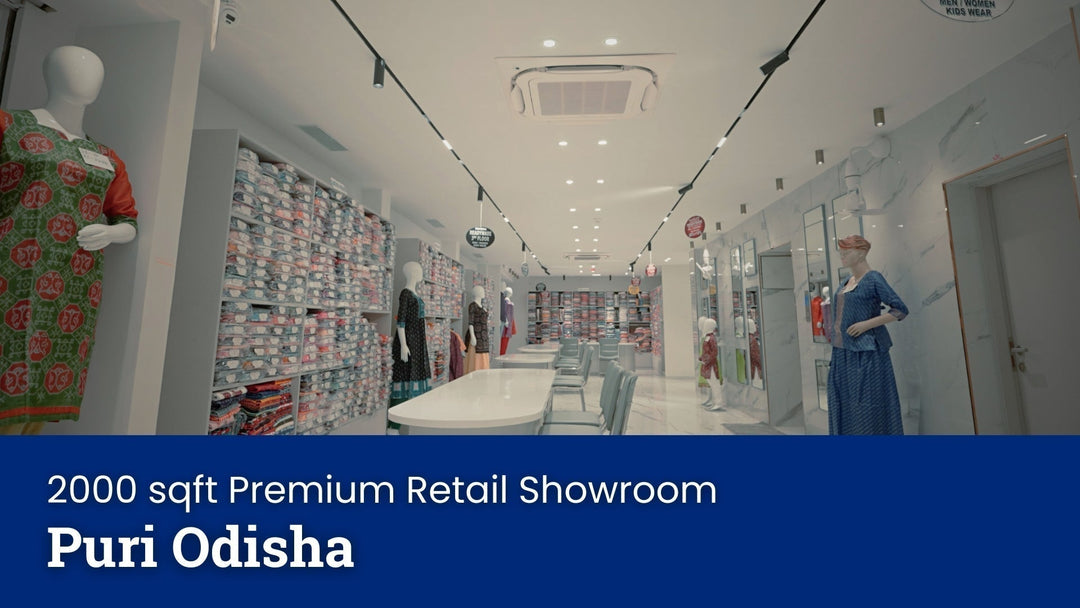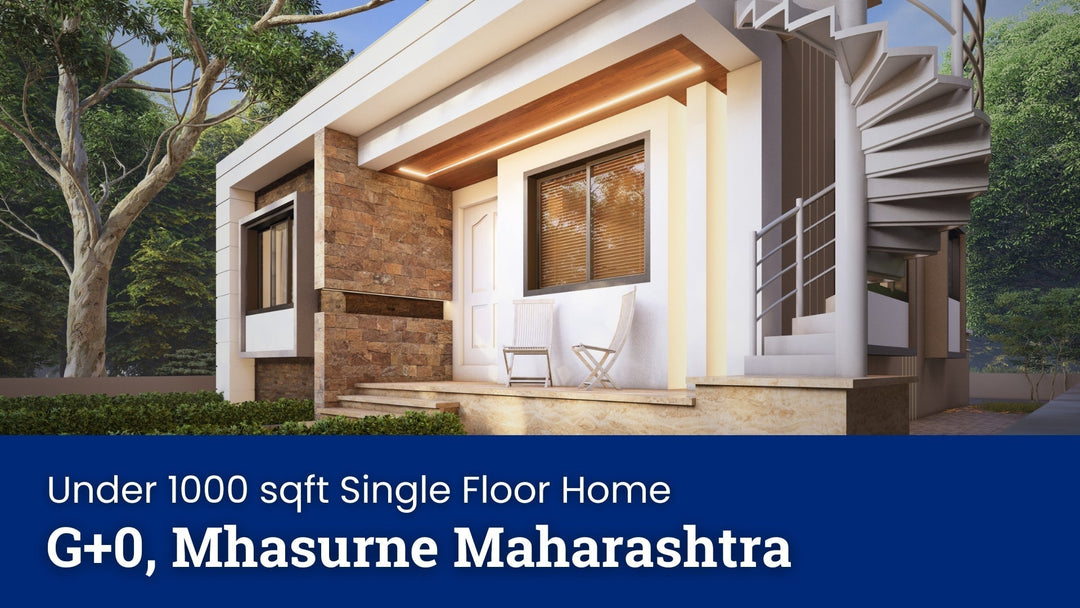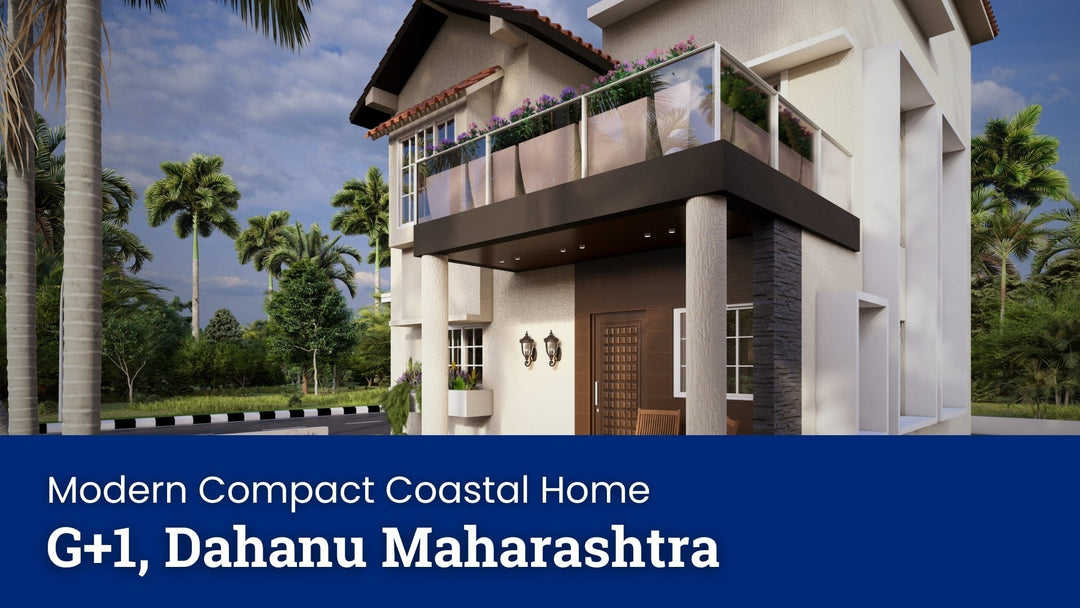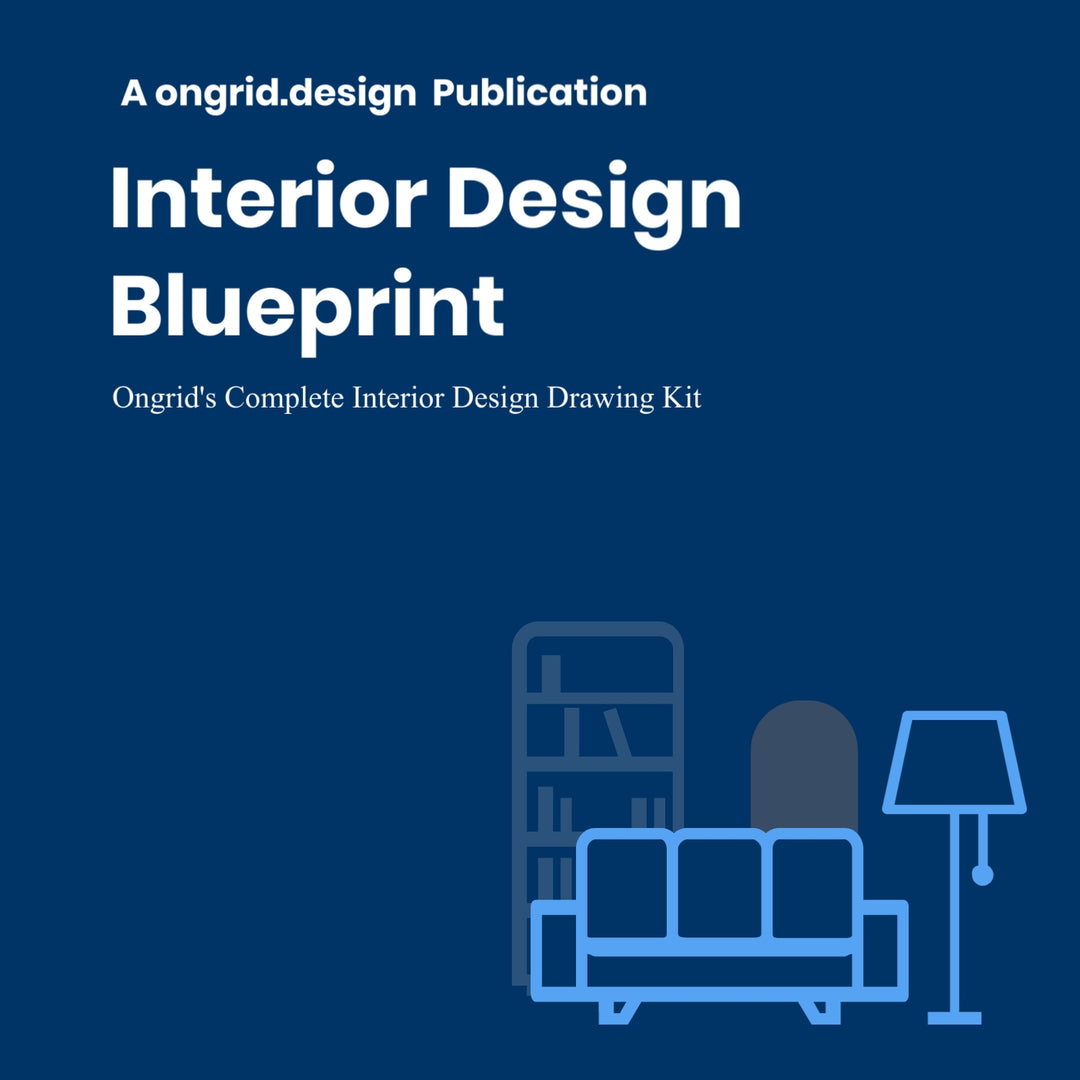The Dahanu Residence – Designing for Climate, Family, and Future on the Maharashtra Coast
 In the verdant, palm-fringed landscape of Dahanu, a coastal town in Maharashtra, a modern family home stands as a thoughtful dialogue between contemporary design and regional wisdom. This is the story of Project 1120, a residence born from a family’s aspiration for a home that is vibrant, functional, and deeply connected to its tropical environment. More than just a structure, this home is a carefully engineered ecosystem, designed by Ongrid to offer spatial comfort, enduring security, and a profound connection with nature, all while navigating the complexities of a hot-humid climate and time-honored cultural principles.
In the verdant, palm-fringed landscape of Dahanu, a coastal town in Maharashtra, a modern family home stands as a thoughtful dialogue between contemporary design and regional wisdom. This is the story of Project 1120, a residence born from a family’s aspiration for a home that is vibrant, functional, and deeply connected to its tropical environment. More than just a structure, this home is a carefully engineered ecosystem, designed by Ongrid to offer spatial comfort, enduring security, and a profound connection with nature, all while navigating the complexities of a hot-humid climate and time-honored cultural principles.
Project Data Specifications
| Data Point | Value / Description |
|---|---|
| Location | Dahanu, Maharashtra, India |
| Plot Area | Approx. 325 sq. m. (~3500 sq. ft.) |
| Built-Up Area (BUA) | Approx. 242 sq. m. (~2600 sq. ft.) |
| Orientation | Primary access from the North-East, optimized for passive light and ventilation |
| Key Features | Double-height living area, shaded terraces, Vastu-aligned kitchen and pooja, comprehensive plumbing and electrical infrastructure, rainwater recharge system |
| Primary Materials | RCC Frame with AAC Block Infill, Vitrified Tiles, Aluminium/UPVC Windows, Mangalore Tiles (roofing and cladding), Regional Stone Cladding |
This detailed case study unpacks the architectural journey from the initial client dream to the final, buildable blueprint. It reveals how a series of design challenges—from mitigating intense solar heat and managing torrential monsoon rains to integrating Vastu principles and ensuring future adaptability—were systematically transformed into architectural opportunities. Through a combination of climate-responsive strategies, technical rigor, and an empathetic, collaborative process, the result is a home that harmonizes modernity with the unique cultural and environmental context of the Maharashtra coast.
Introduction: The Dream, The Challenge, and The Context 
The Client's Vision: A Sanctuary of Light and Longevity
The journey began with a clear and heartfelt vision from the client, a family seeking a contemporary home that would serve as a sanctuary for generations. Their aspirations were centered on a few core principles:
- Spatial Comfort: Generous, light-filled rooms that fostered family togetherness while offering private retreats.
- Connection with Nature: A seamless flow between indoor and outdoor spaces, with views of the lush landscape from every key area.
- Climate Resilience: A home that would remain comfortable year-round, passively mitigating Dahanu’s heat and humidity.
- Longevity and Low Maintenance: The use of durable, high-quality materials that would withstand the coastal climate and require minimal upkeep.
- Cultural Harmony: Integration of essential Vastu Shastra principles and dedicated spaces for prayer and family gatherings.
The Site Context & Geographic Imperatives 
Located in Dahanu, a town defined by its proximity to the Arabian Sea, the site is immersed in a lush, tropical setting. The climate is predominantly hot and humid, characterized by a long and intense monsoon season that brings abundant rainfall, and moderate to high temperatures for the rest of the year. This specific regional context presented a clear set of non-negotiable design drivers:
- Solar Orientation: Managing heat gain from the harsh south and west sun is paramount.
- Cross-Ventilation: Harnessing prevailing breezes is essential for mitigating humidity and maintaining thermal comfort.
- Rainwater Management: A robust and efficient system for managing and potentially harvesting torrential monsoon rain is critical for the building's longevity and sustainability.
The Project Challenge: A Synthesis of Complex Needs 
The design brief required a sophisticated synthesis of multiple, sometimes competing, requirements:
- Integrating a climate-responsive architectural envelope that could mitigate heat while maximizing the intake of natural, glare-free daylight.
- Aligning key spaces such as the kitchen and pooja room with Vastu principles without compromising modern functional workflows.
- Engineering a technically complex infrastructure for rainwater harvesting, greywater reuse, and a modern, safe electrical system.
- Balancing the desire for openness and landscape connection with the need for privacy on a compact, residential plot flanked by existing developments.
The Ongrid Approach: From Vision to Verifiable Blueprint 
Collaborative Briefing & The Discovery Phase
Ongrid’s design process began with a series of in-depth, collaborative consultations. Leveraging our digital-first platform for transparent and continuous communication, we worked closely with the client to develop a comprehensive Design Brief. This process went beyond a simple list of requirements; it was a discovery phase that delved into the family’s lifestyle, daily routines, cultural values, and long-term aspirations. Key requests that shaped the design included:
- Dedicated and serene spaces for relaxation and worship.
- A strong emphasis on passive cooling strategies and natural cross-ventilation.
- The selection of safe, durable, and low-maintenance finishes suitable for a family home.
- Intelligent placement of windows and openings to strike a perfect balance between privacy from neighbors and openness to the landscape.
A Three-Pillar Design Strategy 
Responding to Dahanu’s climate and the client’s ambitions, the Ongrid design team formulated a multi-pronged strategy focused on:
- North-Facing Openings & Strategic Shading: Orienting the home’s primary glazed surfaces and living areas towards the north to capture consistent, glare-free daylight while using deep overhangs, balconies, and shading devices to protect other facades.
- A Palette Rooted in Place: Selecting a material palette inspired by local traditions and proven for its performance in the coastal climate.
- Layered Spatial Organization: Creating a clear hierarchy of public, semi-private, and private zones to ensure both seamless connectivity and individual solitude.
Key Design Solutions and Features: Engineering Comfort and Style

The Double-Height Living Area: The Voluminous Heart of the Home
The centerpiece of the residence is a dramatic double-height living room, a feature that immediately establishes a sense of verticality, spaciousness, and light. As clearly visible in the floor plans and 3D renders, this voluminous space serves multiple critical functions:
- Visual Connection: It visually links the ground and first floors, fostering a sense of an open, interconnected family home rather than a series of disconnected levels.
- Natural Daylighting: High-level windows on the north facade draw in an abundance of soft, indirect daylight, illuminating the core of the home and reducing the need for artificial lighting during the day.
- Passive Cooling Engine: This vertical volume acts as a thermal chimney. As warm air naturally rises, it can be vented out through high-level openings, creating a continuous cycle of air movement known as the stack effect, which passively cools the main living areas. This solution directly addresses the challenge of a compact plot by creating a feeling of generous volume and openness.
This modern duplex-style home plan demonstrates the efficient use of double-height spaces and spatial zoning to create a family-centric, air-cooled, and naturally lit home (Modern Duplex Home Plan).

A High-Performance Envelope: The Climate-Responsive Façade
The home’s exterior is not merely a stylistic statement; it is a high-performance envelope engineered to respond to Dahanu's climate. The architectural elevations and renders showcase a sophisticated interplay of materials and forms:
- Strategic Shading: Deep roof projections, cantilevered balconies, and precisely placed jaali (perforated) screens provide effective passive solar control, shading the walls and windows from the high-angle summer sun.
- Materiality & Performance: The façades feature iconic Mangalore tiles, a hallmark of regional architecture. These terracotta tiles were chosen not only for their cultural identity and aesthetic appeal but also for their excellent thermal performance, providing a layer of insulation for the walls they clad. This is complemented by areas of durable stone cladding and high-quality exterior paint.
- Optimized Openings: The north and east elevations are designed with larger glazed openings to maximize the intake of cool, indirect daylight, while the south and west facades are more solid to buffer against heat gain, with smaller, carefully shaded windows.
(Image of a specific plan view highlighting Vastu alignment.)
Culturally Attuned Spaces: Vastu-Compliant by Design
Respecting the family's cultural values, the spatial organization carefully adheres to Vastu principles without undermining modern functionality:
- The kitchen is strategically positioned in the south-east (the Agni or fire corner), ensuring cultural alignment while also benefiting from morning light.
- The pooja (shrine) room is located in the serene and auspicious north-east quadrant of the plan.
The ground floor plans reveal a layout that thoughtfully balances these traditional mandates with contemporary workflows and open-plan sensibilities, proving that cultural harmony and modern living can coexist beautifully (Vastu in Modern India).
(Image of the detailed plumbing or rainwater harvesting drawing.)
Technical Infrastructure: Engineering for Resilience and Comfort 
The sophistication of the design extends to its hidden systems, as illustrated by the comprehensive plumbing and electrical drawings.
- Advanced Water Management: The plumbing strategy is designed for sustainability and long-term maintainability. The drawings detail segregated drainage lines—separate, clearly defined lines for greywater (from showers and basins), soil water (from WCs), and rainwater—ensuring hygienic and efficient waste disposal. Roof slopes and drainage outlets are engineered to funnel the heavy monsoon rains into a network of catch basins and recharge pits, preventing waterlogging around the foundation and sustainably replenishing the groundwater table. Strategic placement of manholes and inspection chambers provides easy access to the entire underground drainage network for future cleaning and maintenance. The plan also incorporates water-efficient fittings and robust provisions for a future rainwater harvesting system to store and reuse water (Rain Water Harvesting Maharashtra Homeowners).
- Electrical Design for Modern Living: Logical zoning of switches and circuit looping ensures intuitive use, with dedicated circuits for major appliances, lighting, and power sockets. Layered lighting schemes with ambient, task, and accent lighting highlight circulation, functional zones, and architectural features. The layout also includes universal plug points and dedicated sockets in all key spaces, with pre-planned provisions for air conditioning units in the bedrooms.
A Contextual Palette: Materials and Sustainable Detailing 
The material selection process was guided by regional appropriateness, durability, and sustainability.
- Regional Materials: The scheme draws heavily on a palette of locally proven and sourced materials, including stone cladding from nearby quarries, AAC blocks for thermal insulation, durable vitrified tiles, and iconic Mangalore roofing tiles. This reduces embodied energy by minimizing transportation and firmly roots the form in its geographic and cultural context (5 Unique Elements That Define Maharashtra’s Home Design).
- Integrated Landscaping: The landscape design extends the architecture through generous planting beds, native species, and permeable pavers in external areas. Planter box details integrated into balconies and terraces help create cooler microclimates, elevate user comfort, and support local biodiversity (Landscape Design Fundamentals).
The Outcome: A Buildable Blueprint for a Dream Home 
Through a powerful combination of climate-conscious design, rigorous technical detailing, and deep cultural sensitivity, Ongrid delivered a blueprint that perfectly meets the client’s desire for a home that is open, secure, and timelessly aesthetic. Every design decision—from the strategic placement of a window and the depth of an overhang to the configuration of the living areas and the engineering of the water systems—reflects a careful and holistic consideration of the local climate and context, leveraging scientific principles and traditional wisdom.
Empowering the Client: From Aspirant to Informed Project Owner 
The collaborative, digital-first design process was instrumental in transforming the clients into active, empowered owners of their project. Armed not just with beautiful 3D renders and clear floor plans, but with a deep understanding of the engineering and design rationale behind them, they are equipped to move into the construction phase with clarity and confidence. This comprehensive set of documents provides them and their chosen builders with an unambiguous, buildable, and future-proof roadmap for execution.
A Story in the Local Landscape
By deeply anchoring the home in the geography of Dahanu—where the interplay of summer heat, monsoon rains, and coastal breezes defines daily life—Ongrid’s design ensures the residence remains comfortable and efficient year-round. The use of local stone and tile, coupled with integrated planting and shaded terraces, creates a natural, symbiotic connection between the home and its verdant landscape.
Key Educational Takeaways for First-Time Homeowners
The journey of Project 1120 offers several invaluable insights for prospective homeowners:
- The Power of Climate-Responsive Planning: Understand how strategic orientation, shading, and passive ventilation designed upfront can prevent future discomfort and reduce long-term energy costs (Passive Architecture Indian Homes).
- The Wisdom of Local Materials: Recognize how using regionally appropriate materials can enhance a home's identity, improve its performance, and often be sustainable and cost-effective (5 Unique Elements That Define Maharashtra’s Home Design).
- The Value of Detailed Blueprints: Appreciate how investing in comprehensive construction documents developed through a collaborative online process empowers owners and reduces costly on-site changes (Home Design Blueprints Trusted by Certified Contractors).
- The Foresight of Integrated Utilities: Understand the importance of planning for sustainable utilities like water reuse systems and future-ready wiring during the initial design phase (Rain Water Harvesting Maharashtra Homeowners).
Conclusion: A Testament to Intelligent and Empathetic Design
Project 1120 stands as a testament to intelligent design, regional sensitivity, and empowered client collaboration. Every element of this home—spatial, technical, and cultural—emerges from the dynamic interaction between the local geography, the family’s aspirations, and Ongrid’s educational, data-driven design process. For prospective homeowners in Maharashtra, South India, and beyond, this case study provides not only a model for a beautiful, contemporary home but a model for the journey itself—a journey towards owning a resilient, meaningful, and enduring place in the landscape.










